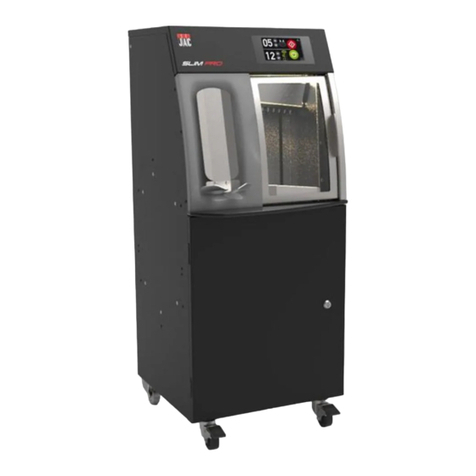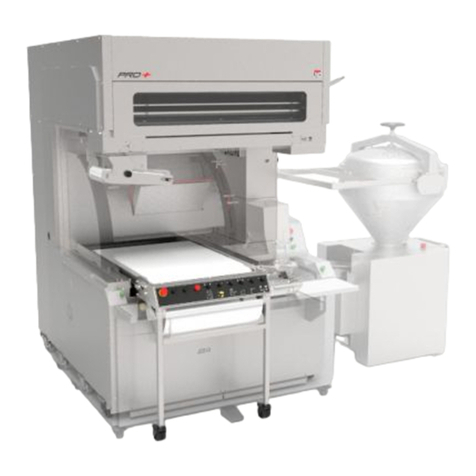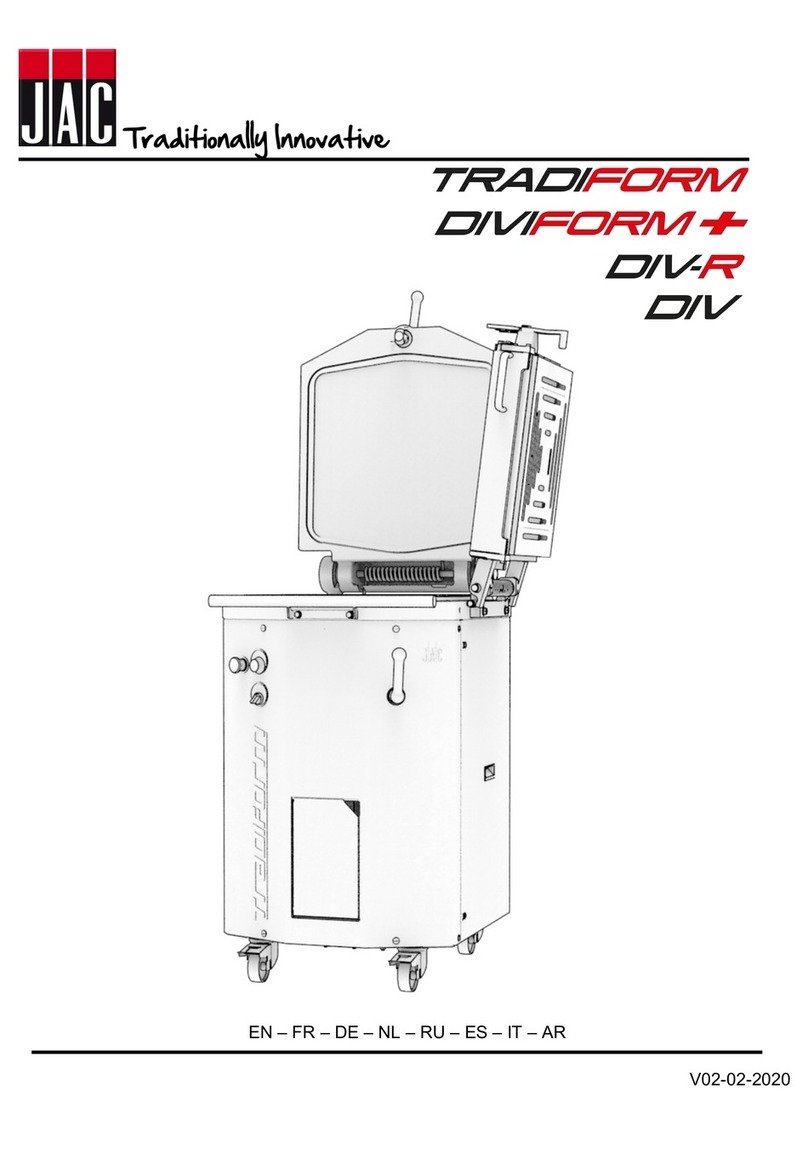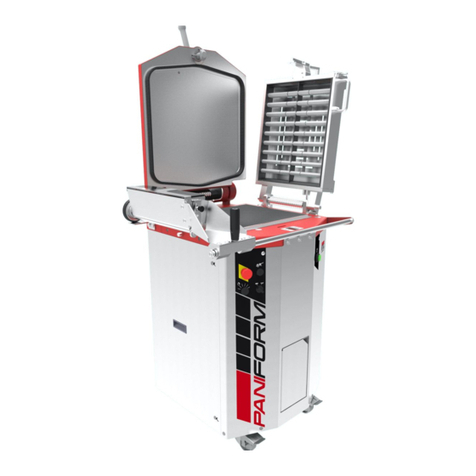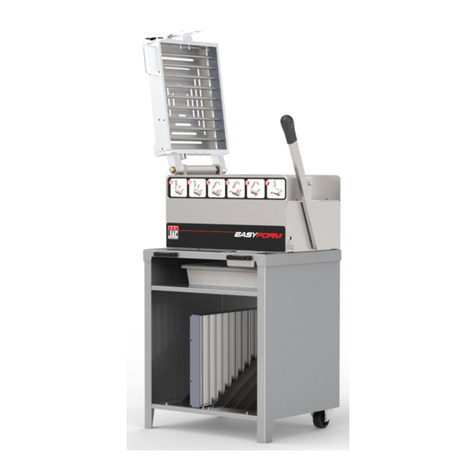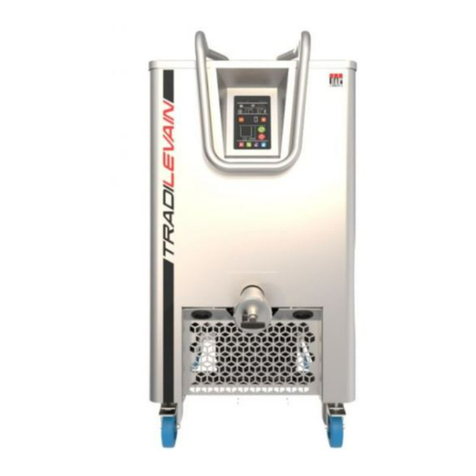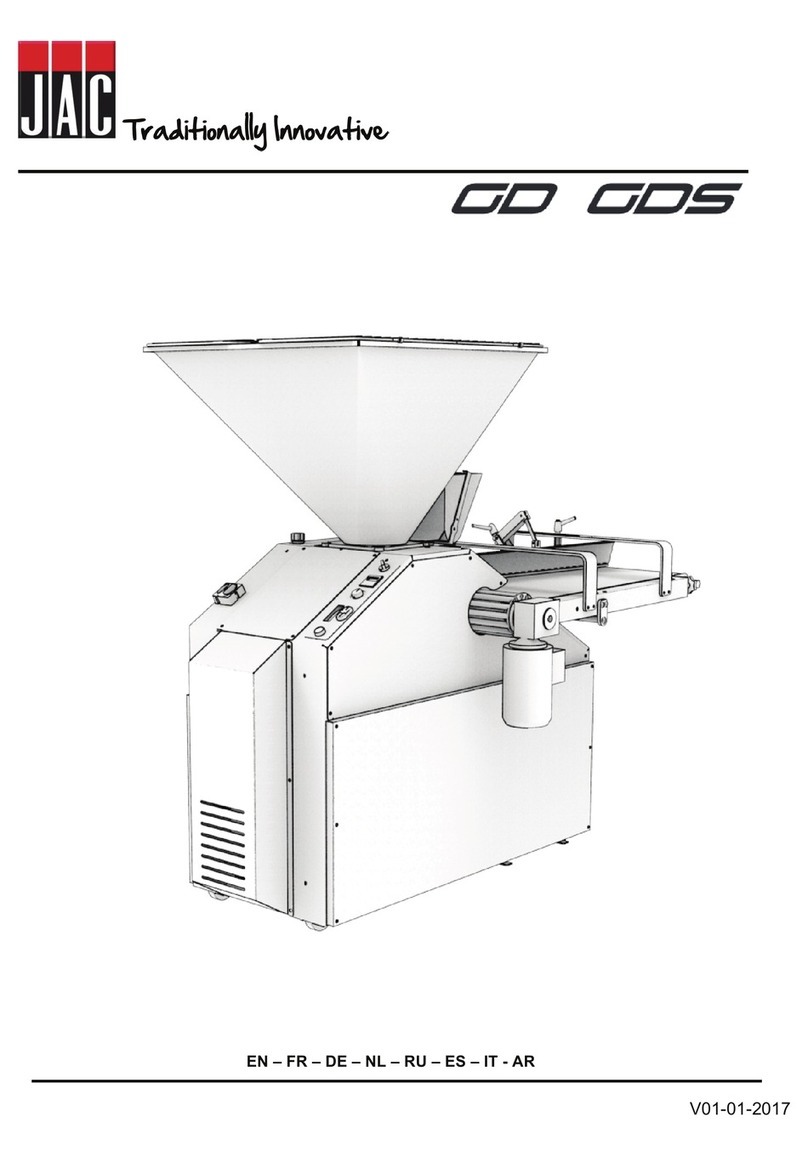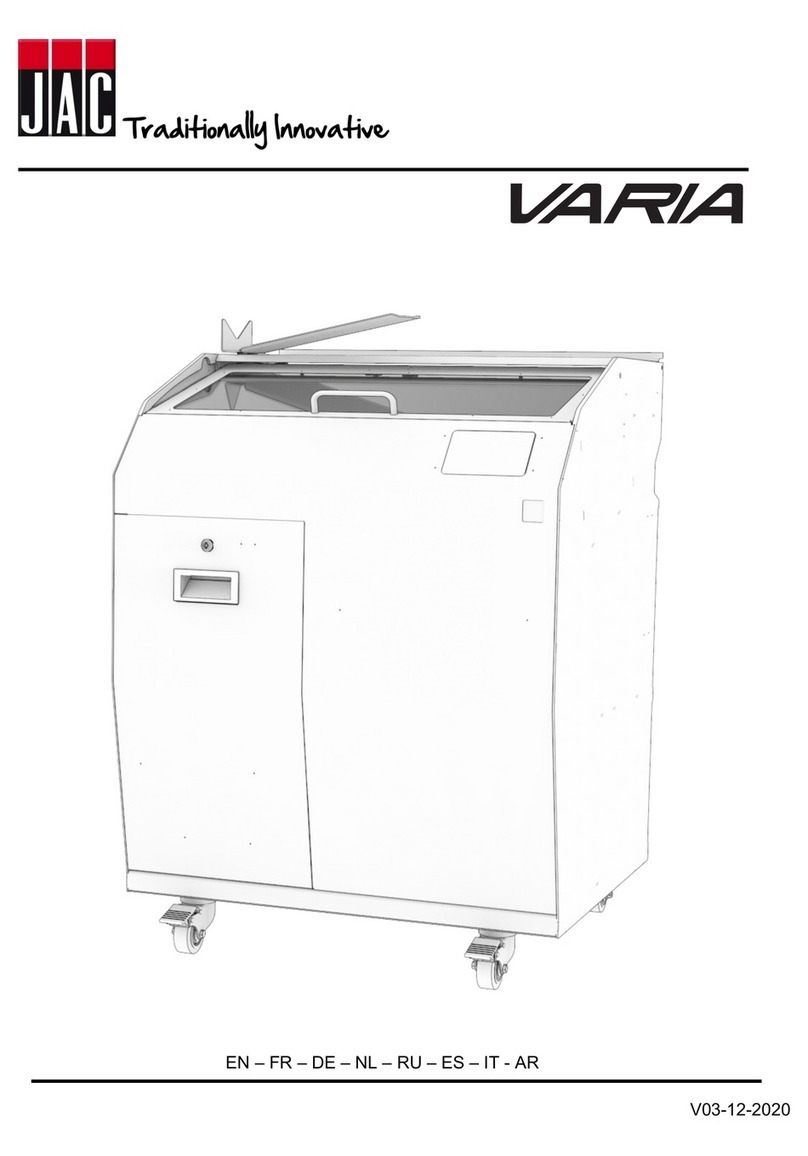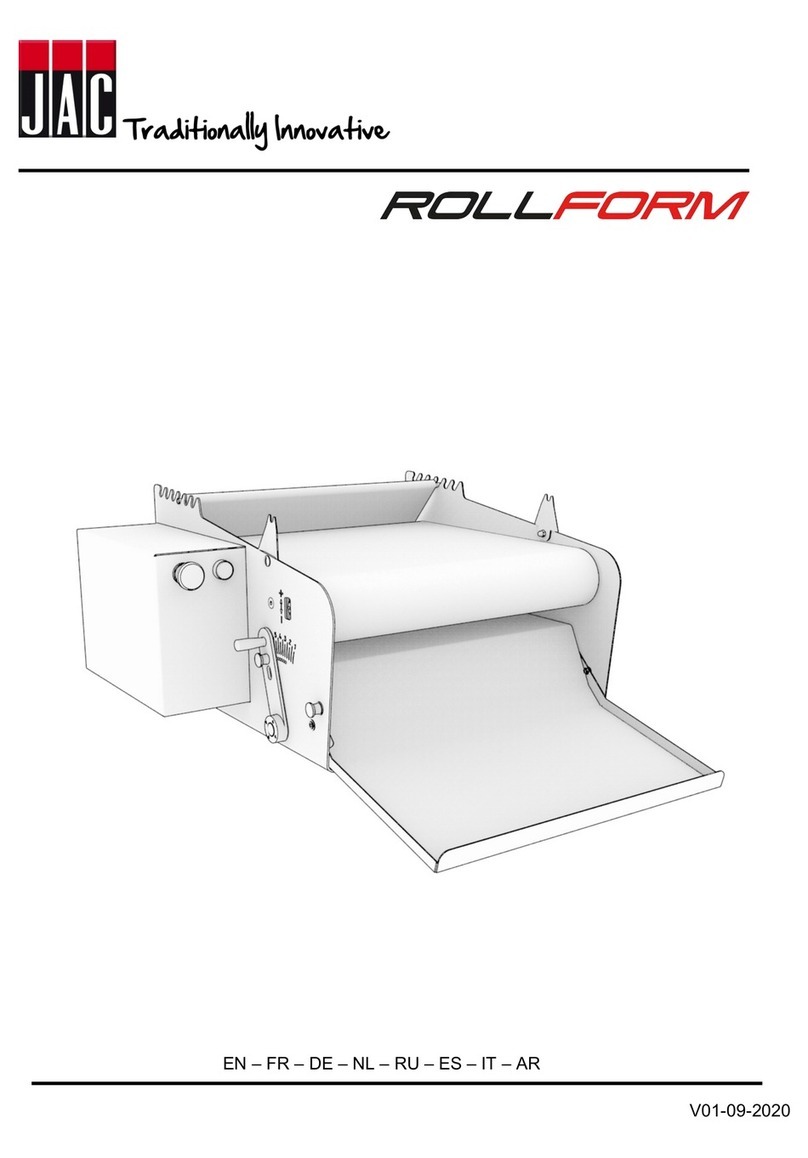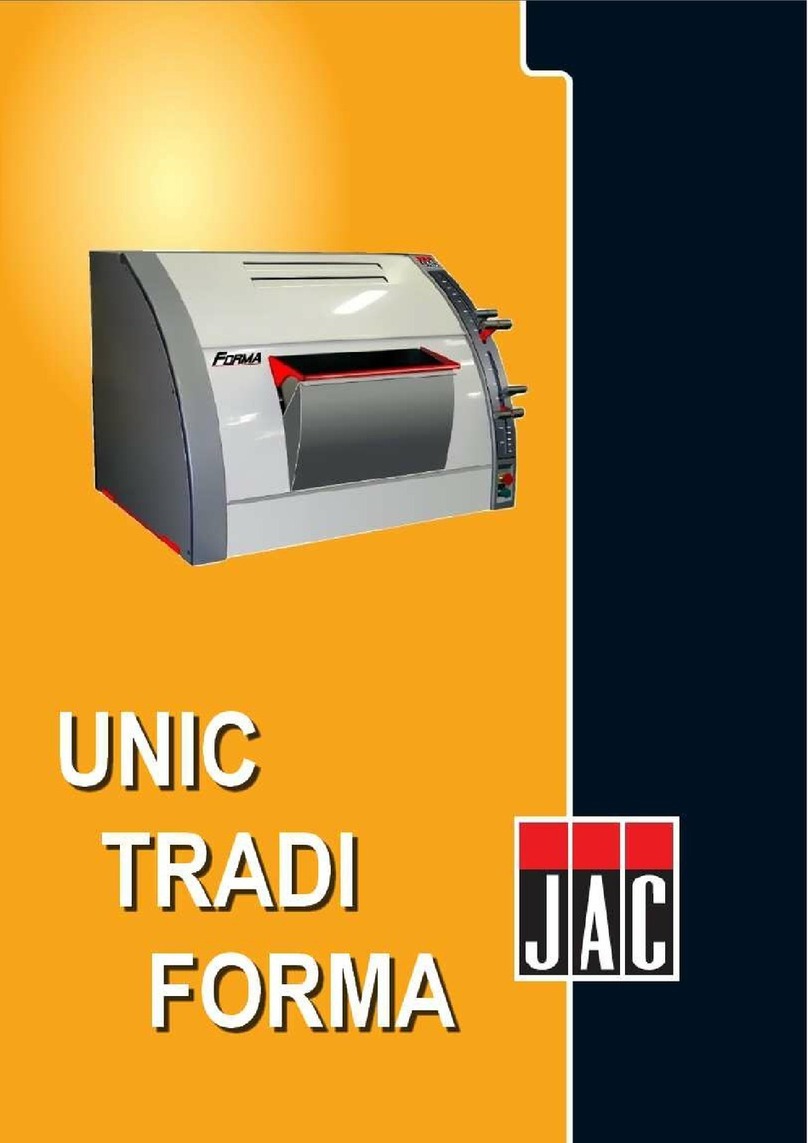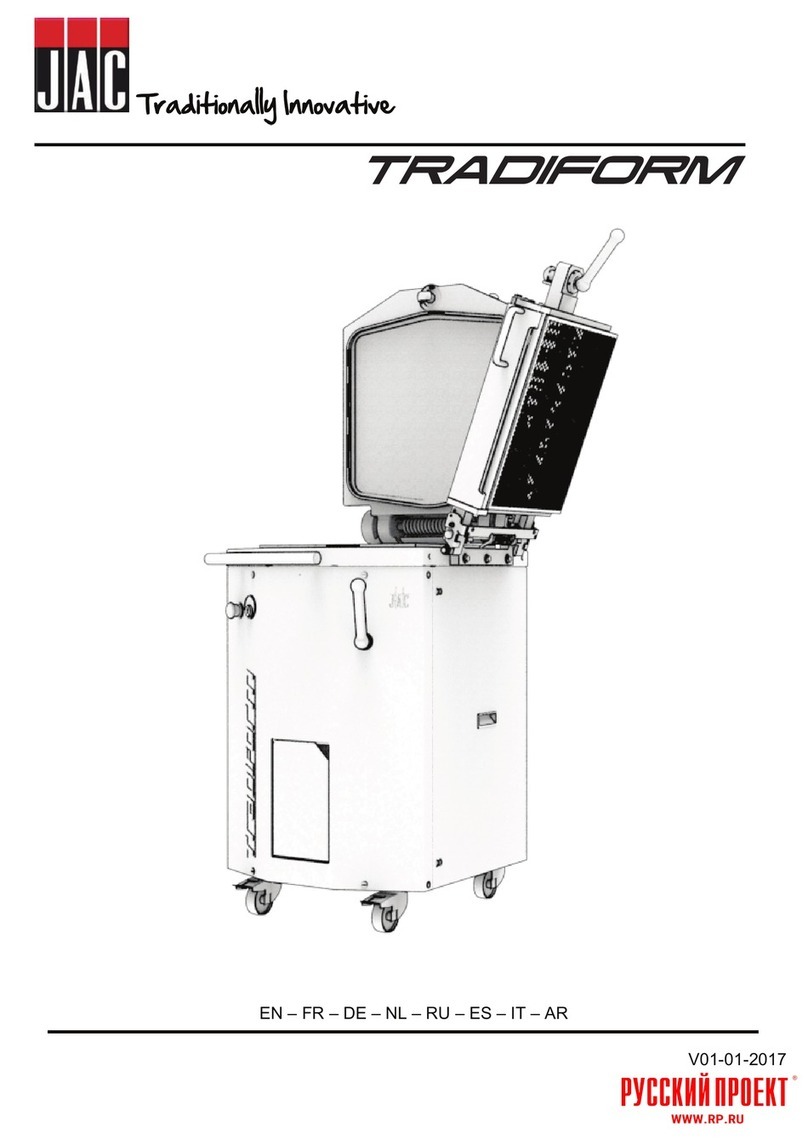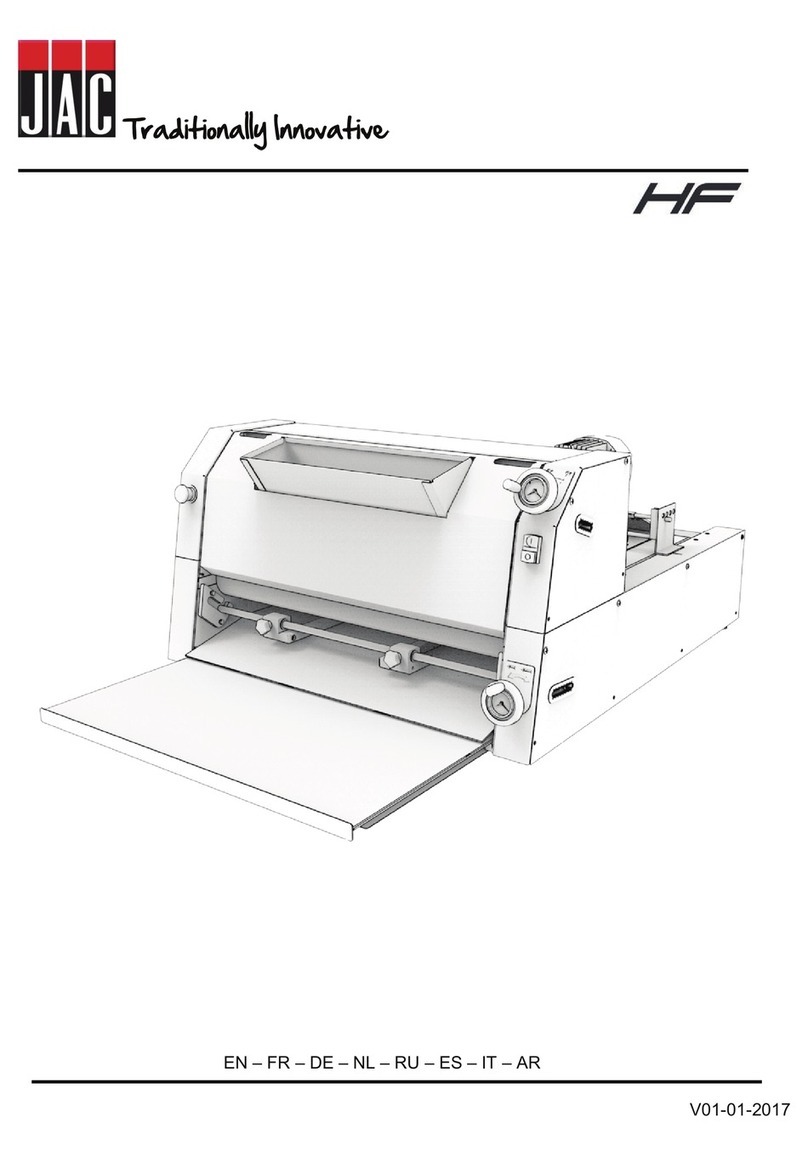
English
This pictogram indicates an electrocution hazard. Please isolate the machine
before carrying out any work on it. You will find this pictogram at the back of the
machine close to the power cable and inside the machine on the electrical
enclosure (fig.8, n°25).
You will find the circuit diagram for the machine on the back of the electrical
enclosure door (fig.8, n°26).
5.4 Placing the machine and installing the cover
These operations must be carried out by a qualified technician.
Using the machine with a gap between the body of the machine and the cover risks
serious injury.
Always ensure that there is no gap between the body of the machine and the cover
(fig. 12).
A. Preparing the worktop
o Make the required cut-outs in the worktop to enable the machine to be fitted. Refer to the
figure showing the minimum and maximum dimensions (fig.13).
o To protect the worktop from moisture, be sure to seal the edges of the joint between the
worktop and the machine (fig. 14).
B. Installing the cover
o The cover is attached to the frame when the machine is delivered. Be sure to disconnect
the cables on the cover before removing it for its installation.
o Remove the cover by unscrewing the 4 fastening nuts (fig. 15).
o Insert the machine into the cabinet (fig. 16), then fit the cover onto the machine.
o Check to ensure that there is no gap between the cover and the body of the machine (fig.
12). If a gap can be observed, refer to point C below to adjust the height of the machine in
order to eliminate this gap.
o Secure the cover by holding it against the worktop and tightening the 4 nuts.
o Connect the cables on the cover next.
C. Setting machine height
o Remove the rear, front and side covers to gain access to the castors (fig. 17).
o Unscrew the locknuts on the castor threaded rods, then set the height of the castors by
rotating the threaded rod (fig. 18).
o Check the 4 castors to ensure they are all at the same height and that the machine is
perfectly stable.
o Check to ensure there is no gap between the cover and the body of the machine (fig. 12).
o Tighten the locknuts, then close the casing panels again (fig. 15).
o Install the cover (refer to point B. above)
5.5 Commissioning
Before commissioning, ensure that there are no extraneous objects interfering with the machine’s
moving parts.
For machine operation, please refer to the “Operation” chapter.
5.6 Danger
If the user or the machine is in danger, use the main isolator switch to cut the power supply to the
machine.












